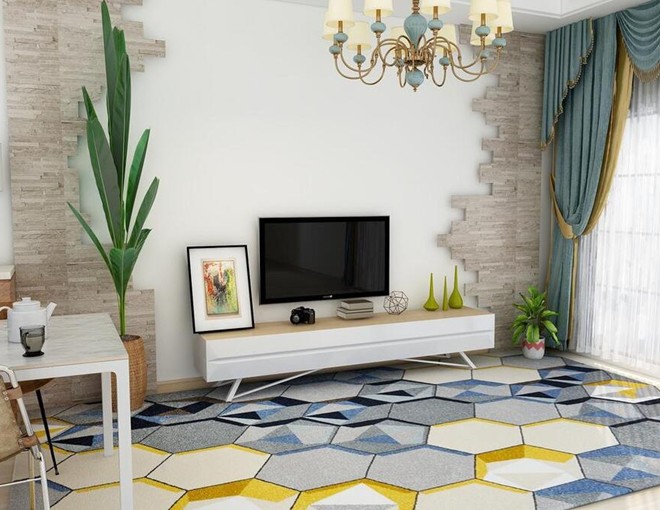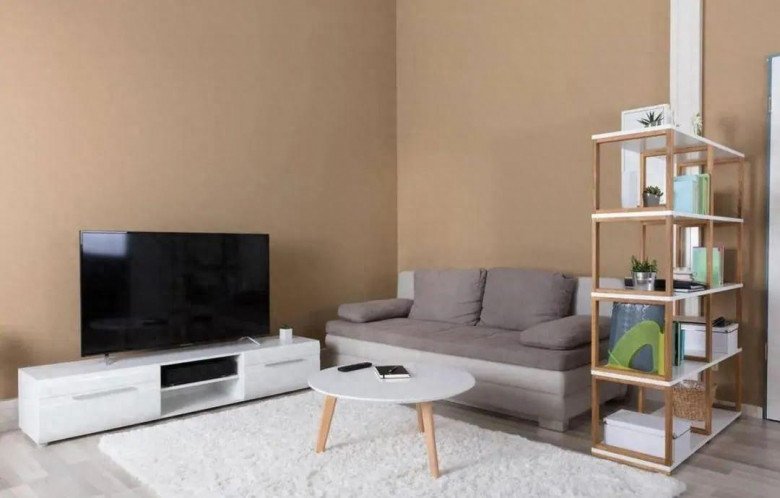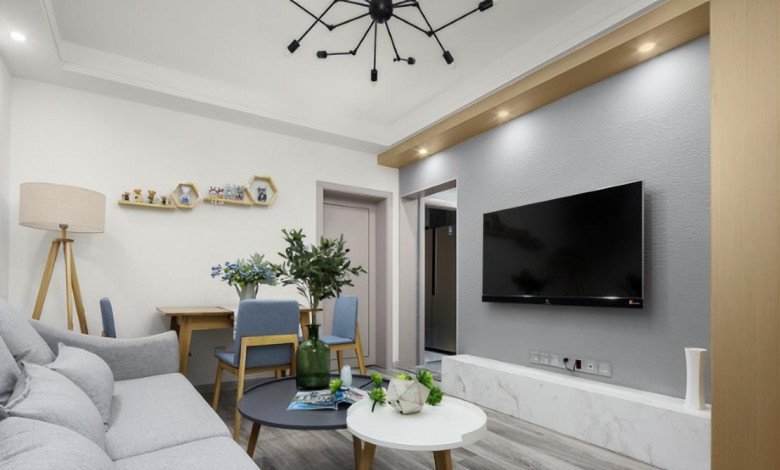So, what are the pros and cons of these two installation methods? Let’s explore the advantages and disadvantages of each option.

1. Advantages and Disadvantages of Placing the TV on a Cabinet
– Advantages:
Placing the TV on a cabinet can enhance the overall aesthetic appeal by integrating the TV with the room’s decor and design style.
– Disadvantages:
This setup can interfere with signal reception, especially for satellite or cable TV receivers that require wall mounting.
If the cabinet is not well-ventilated, it can cause condensation on the back of the TV, potentially shortening its lifespan.
Consider the power and signal cable connections when placing the TV. Improper management of cables can make the entire TV area look cluttered and detract from the overall aesthetics of the room.

2. Advantages and Disadvantages of Wall-Mounted TV
– Advantages:
Wall-mounted TVs save space compared to cabinet placement, making them ideal for small apartments or homes with limited space.
They can also blend seamlessly with the room’s decor, enhancing the overall aesthetic appeal.
Another advantage is the relative ease of installation and maintenance. During installation, you only need to mount the TV on the wall and connect the necessary electrical wiring.
Unlike traditional TV placement, wall-mounted TVs do not occupy floor or table space, making them more convenient and practical.
– Disadvantages:
Wall-mounted TVs require a certain level of skill and incur installation costs. Since it involves mounting on a wall, you’ll need to purchase professional mounting hardware and engage experts for installation. These additional expenses may be a challenge for some consumers.
Secondly, wall-mounted TVs have specific requirements for wall material and structure. If the wall is not sturdy enough or made of unsuitable material, it could pose safety hazards.
Wall-mounted TVs may also experience issues with signal reception and interference. Since they need to be connected to a router or other signal sources, there’s a possibility of signal blockage or increased interference.

In conclusion, each TV installation method has its own set of pros and cons. Consider your living space and choose the option that best suits your needs. However, regardless of whether you place your TV on a cabinet or mount it on the wall, there are a few important factors to keep in mind during installation:
– Avoid installing the TV too high, as it may cause neck strain. Ideally, position it so that you can see the bottom third of the screen from your seating area for optimal viewing comfort.
– Calculate the ideal distance between the seating area and the TV based on the screen size. For example, a 32-inch TV should be placed 1.8 meters away, while a 60-inch TV should be viewed from a distance of 3.4 meters.
– Ensure the room has adequate lighting without causing glare on the screen. Avoid placing the TV too close to windows or other light sources to prevent reflections that may interfere with your viewing experience.

































